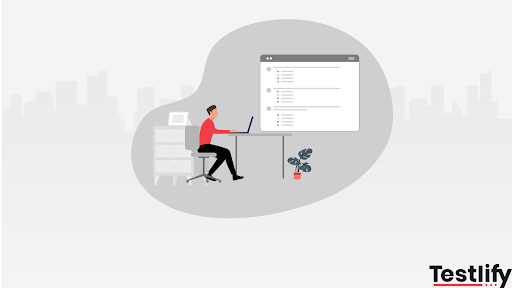Candidate assessment tools eliminate unconscious bias by recruiters using objective evaluation techniques. They are data-driven and so devoid of any human prejudices.
Bias while hiring is harmful, and unethical & should be avoided at all costs, even if unintentional. Considering the quantum of vacancies a recruiter has to fill within a limited period, it is human to make such mistakes. But companies miss out on talented individuals owing to this unconscious bias indirectly affecting their growth.
To avoid this, raising awareness about bias among recruiters is necessary. Further, pre-screening tools for candidate assessments can minimize unconscious bias and make way for a healthier recruitment process.
What is Unconscious Bias?
Showing bias means having a positive or negative inclination towards a particular group of people. This prejudice can arise from an affinity or a dislike of their age, color, ethnicity, physical features, gender, or sexual orientation.
Unconscious bias means to judge people based on these factors not as a conscious choice but inadvertently based on preconceived notions. It can stem from false ideologies and general assumptions lacking any empirical evidence. During candidate assessments, these can show up unbeknownst to the recruiters and reduce the quality of the process.
Impact of Unconscious Bias
Without realizing, you might be losing company revenue in hiring, rehiring and compensating for employees recruited through bias. It is estimated that a whopping 64 billion dollars are spent annually in the US on the loss and replacement of talents caused due to workplace bias.
Studies also reveal that better financial performance is closely associated with companies having a diverse and inclusive workforce.
Businesses with higher racial & ethnic diversity are 35% more likely and higher gender diversity are 15% more likely to have better financial returns than their corresponding national industry medians.
Recruiting and retaining employees from diverse backgrounds is therefore crucial for a successful establishment. To achieve this, objective tools for candidate assessments are imperative as it helps with unbiased hiring.
Eliminating Unconscious Bias while hiring
Bias can sneak through during the hiring process, even among the best recruiters. It is critical to eliminate indications of bias at every stage so that it doesn't harm your hiring process.
Here are some ideas for implementing to avoid unconscious bias while hiring.
1. Anonymize the candidate
Do not receive name, ethnicity, age, gender, marital status or any background details before the final stage of recruitment.
2. Use inclusive language in the job description
What candidates perceive about your organization starts right from reading the job description you post. Make sure to use language that does not exclude a group of people.
3. Use pre-screening tests
Candidate assessments identify the cognitive, technical, linguistic and behavioral knowledge of the candidate without any human prejudices. They are pre-approved by subject matter experts and can successfully eradicate unconscious bias during evaluation.
4. Deploy a diverse hiring team
A team of 4 to 5 recruiters from diverse backgrounds should manage the candidate assessment process to avoid a biased point of view from one recruiter seeping in.
5. Clarify with the candidate
It is best to discuss your concerns with the candidate to ensure they can work as per the company's expectations before dismissing their application altogether based on any presumptions.
Read more on examples of unconscious bias and how to overcome them here.
Role of candidate assessments in avoiding unconscious bias
Pre-screening tools are data-driven and depend on Artificial Intelligence for effective and efficient recruitment. Therefore, they do not rule out a potential talent from entering the company due to unconscious bias.
Here is how candidate assessments help:
- Ensure responsible hiring
- Eliminate biased questions with objective tests
- Provide a level field for all via a user-friendly interface
- Reduce human errors by not dismissing or forgetting any applicant
- Maintain background privacy
- Evaluate trust score of the test taker
- Generate detailed assessment reports on the candidate's skills without mentioning their background.
- Remove any competitive edge for candidates with good communicating skills but lacking the required technical knowledge by using tests customized to the roles
- Can assess cultural fit using cognitive ability, psychometric and situational judgement tests objectively instead of a subjective evaluation by the recruiters.
Did you know? Testlify offers a video recording feature as a part of candidate assessments. It provides an opportunity for every test taker to introduce themselves without the disadvantage of a biased interview right from the beginning.
Conclusion
Not only while hiring, it is also prudent to check and remove any unconscious bias affecting the employees among your workforce frequently. Awareness and acknowledgement of its existence is the first step to prevent it from happening.
Numerous companies lose out on talents and revenue due to their non-inclusive workplaces and unconscious bias stemming from obsolete cultural beliefs in their hiring process. Learn how to practice inclusion and create a better work environment for your employees here!



















